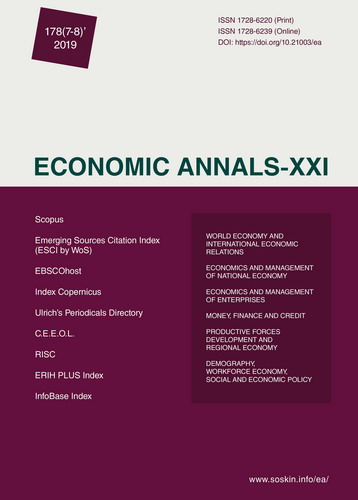Impact of expectations on grain futures price formation
Impact of expectations on grain futures price formation
Author(s): Dmytro Shyian, Iryna Sakhno, Kateryna KramarenkoSubject(s): Business Economy / Management, Agriculture
Published by: Institute of Society Transformation
Keywords: Time Series; Total Sliding Expectations; Commodity Markets; Futures; Price of Goods; Grain Futures; Corn Futures; USA;
Summary/Abstract: Introduction. The problems of estimating and forecasting the price of grain futures in the US market are discussed in the paper. It is emphasized that the expectation factor in such markets plays one of the leading roles. It is noted that it is the grain market that is significantly influenced by expectations due to the forecast of future harvests in different parts of the world.The purpose of the study is to analyze the process of shaping the dynamics of future prices for wheat and corn (maize) under the influence of the expectations factor in the United States in 2009-2019.Methods. The authors’ own technique to analyze the dynamics of future price changes through the transformation of primary data, using the cumulative sliding expectations method, is proposed.Results. Analysing the data on changes in the prices of futures for grain, the periods of their sharpest increase in wheat and the most significant fall in corn have been identified. Comparison of the absolute data of the dynamic series and the values of the total sliding expectations made it possible to state that the maximum and minimum values of the total sliding expectations are related to the maximum values of future prices. Analysing the fastest rise in prices of wheat futures and the values of total sliding expectations, the latent fluctuations in expectations change of economic agents have been revealed.Conclusion. It is concluded that the proposed transformation method of the primary data on the dynamic series of changes in grain futures prices reveals hidden patterns, which in turn improves forecasting of future events in the market.
Journal: Економічний часопис - ХХІ
- Issue Year: 178/2019
- Issue No: 07+08
- Page Range: 123-133
- Page Count: 11
- Language: English

